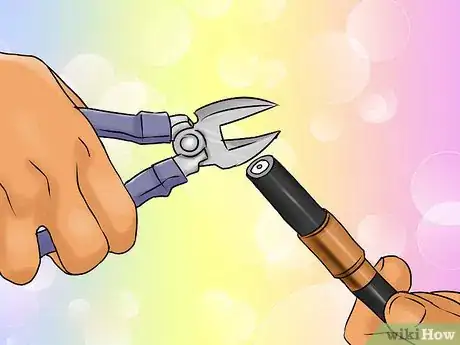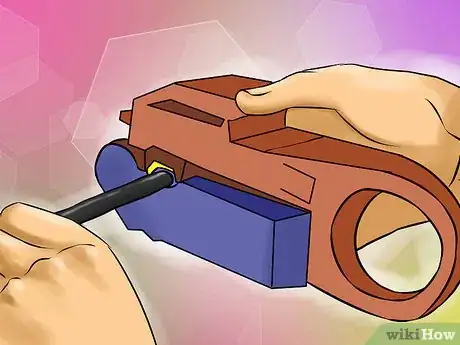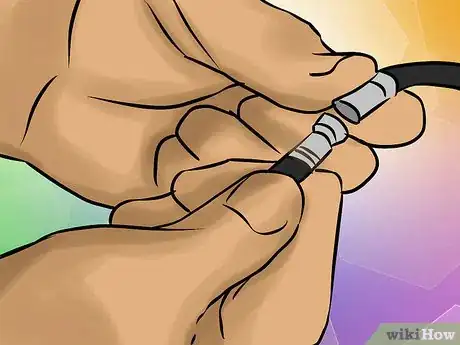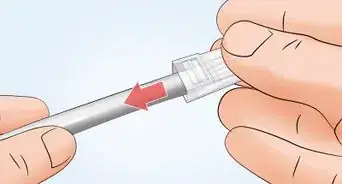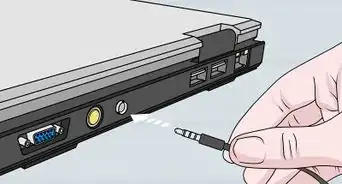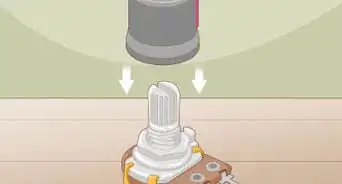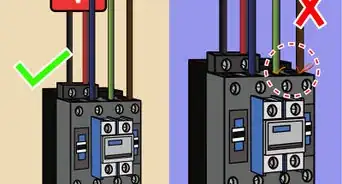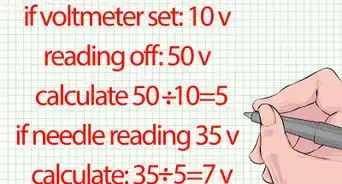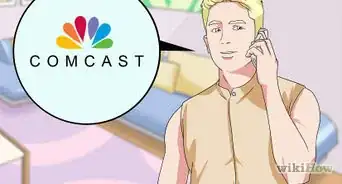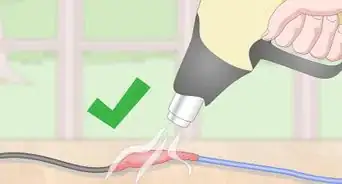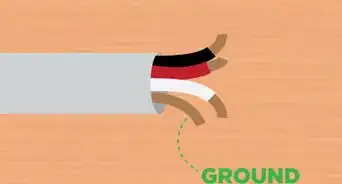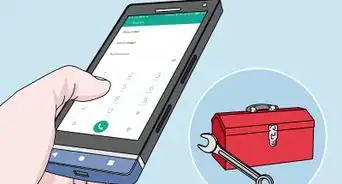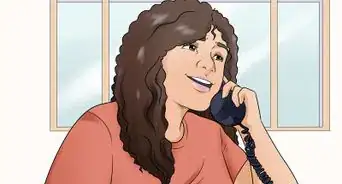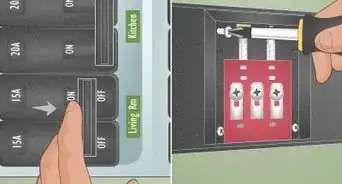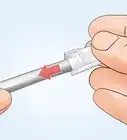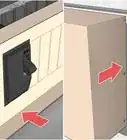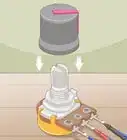An easy-to-follow guide to splice a coaxial cable
X
wikiHow is a “wiki,” similar to Wikipedia, which means that many of our articles are co-written by multiple authors. To create this article, volunteer authors worked to edit and improve it over time.
This article has been viewed 319,618 times.
Learn more...
Coaxial cable, commonly referred to as coax, is an electronic signal wire used for signals that are noise sensitive. To protect the signal of interest, coax wraps a single conductor with a tube of metal foil and mesh. The tube runs co-axially over the signal conductor and requires a specific coax crimp termination method. Use these tips to learn how to splice coax cable.
Steps
-
1Create termination points.
- Cut off the ends of the coax cables to be spliced. Use small sharp wire cutters. Create squared off surfaces, rather than beveled surfaces.
- Mold the ends of the coax using your fingers. Mold the ends of the cables back into cylinders. They will have been distorted by the pressure of the cutting operation.
-
2Insert the cables, one at a time, into a coax stripper tool. Coax stripper tools are available at hardware and electrical stores. As each cable is inserted, make sure that the end of the cable is seated flush against the wall or guide on the stripping tool. This ensures proper strip lengths.Advertisement
-
3Clamp the stripping tool around each cable. Once the tool is in place around the cable, smoothly spin the tool around the cable 4 or 5 times. Keep the rotation in 1 place on each cable. Do not apply any force that would pull on the cable insulation coating.
-
4Remove the coax stripping tool from each cable as the strip cut is completed. The stripping tool made 2 cuts simultaneously. Use your fingers to gently pull off the material nearest the end of each cable. This exposes the bare center conductor of each cable.
-
5Pull off the outer insulation that has been freed on each cable by the second cut made by the stripping tool. Pull gently with your fingers. This exposes a layer of foil on each cable.
-
6Tear off the exposed foil on each cable. This will expose a layer of metal mesh on each cable.
-
7Bend back the exposed metal mesh on each cable with your fingers. Do not tear the layer of foil that is under the metal mesh. The layer of foil protects the inner insulation. Bend the mesh all the way back so that it is molded over the end of the outer insulation on each cable.
-
8Press the end of each cable into the back of an F connector. Make sure that on each connector, the white inner insulation can be seen pressing against the front flange of the connector. It may be necessary to jiggle and continue to push the coax and the connector together to achieve proper seating. Use straight pressure only. Do not twist the coax in the body of the connector.
-
9Crimp the connections. Place each F connector into a coax crimping tool, which is available at hardware and electrical stores. Execute the crimp by fully squeezing the crimping tool handle. Release the handle and open the crimping tool. Remove the finished crimp connection from the tool.
-
10Complete the splice. Connect the 2 cables to either end of a BNC female to female coaxial adapter. These are available at hardware and electrical stores.
Advertisement
Community Q&A
-
QuestionHow can I determine if the comcast cables are spliced or connected to my neighbor's homes? My cable reception and internet are continually dropped.
 Community AnswerUse an O-scope to send a pulse into the cable and look for spikes and/or discontinuities reflected. There should only be one at the distance the coaxial runs to the drop box cable origin.
Community AnswerUse an O-scope to send a pulse into the cable and look for spikes and/or discontinuities reflected. There should only be one at the distance the coaxial runs to the drop box cable origin. -
QuestionCan I plug a Cat 6 ethernet cable into my neighbor's router?
 Community AnswerAssuming that the device you want to connect is within 100 m of the router (accounting for windows, wall, fences, etc.), then you should be able to connect to the router.
Community AnswerAssuming that the device you want to connect is within 100 m of the router (accounting for windows, wall, fences, etc.), then you should be able to connect to the router. -
QuestionCan I splice two cables together like a regular wire splice? Or can I solder two cables together?
 Community AnswerNo. There are certain physical effects that come into play at high frequencies which are not significant at low frequencies or DC - to simplify greatly, the space around the cable is itself electronically active, not merely the metal part itself. That's why you need coaxial cable, not just two wires side-by-side like regular mains power cable. This also means that you can't reliably splice coaxial cable without very careful consideration of the joint geometry.
Community AnswerNo. There are certain physical effects that come into play at high frequencies which are not significant at low frequencies or DC - to simplify greatly, the space around the cable is itself electronically active, not merely the metal part itself. That's why you need coaxial cable, not just two wires side-by-side like regular mains power cable. This also means that you can't reliably splice coaxial cable without very careful consideration of the joint geometry.
Advertisement
Things You'll Need
- Wire cutters
- Coax cable stripping tool
- F connector
- F connector compression tool
- BNC coaxial adapter
About This Article
Advertisement
